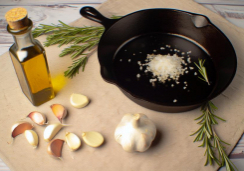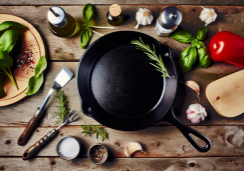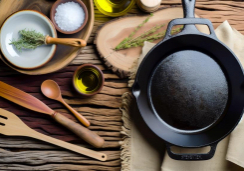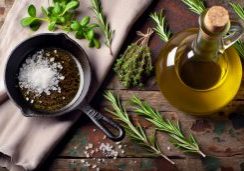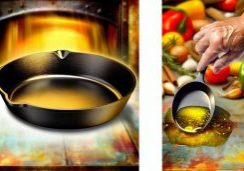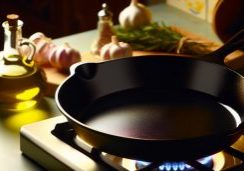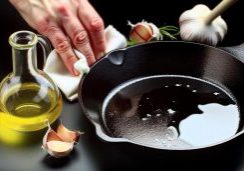8 Essential Sous Vide Steak Cooking Techniques
Just as Hemingway uncovered the artistry of simplicity in his prose, so too can you reveal the exquisite flavors of a steak through the precision of sous vide cooking. You've likely heard of this culinary technique, which brings a level of control to your kitchen that traditional methods can't match.
By focusing on the essentials—selecting a quality cut, mastering thickness, precise temperature settings, and proper seasoning—you'll transform your steak into a masterpiece of taste and tenderness.
Vacuum sealing, the nuances of time, the art of searing, and the patience in resting and serving are but a few of the chapters in your upcoming culinary narrative. But beyond these basics lies a world of subtleties and secrets that can elevate your dish from good to exceptional.
As you stand poised with your sous vide circulator in hand, remember that the journey to the perfect steak is as rewarding as the first bite. Will you embrace these techniques to craft an unforgettable dining experience?
Selecting Quality Steak
When you're on the hunt for the perfect steak to sous vide, zero in on cuts like ribeye or tenderloin with rich marbling and a thickness of at least 1.5 inches to ensure a succulent and flavorful result. Selecting quality steak isn't just about picking any kind of steak off the shelf; it's about eyeing the one that will transform under precise temperatures into a perfectly cooked masterpiece.
Imagine the sizzle as you sear your sous vide steak, the kind once reserved for high-end restaurants or crafted by the former culinary director of Serious Eats, the New York Times food columnist J. Kenji López-Alt, in his book 'The Food Lab: Better Home Cooking Through Science.' His sous vide recipes revolutionized home cooking, and it all starts with the steak selection.
Opt for freshness and well-preserved cuts, as they're paramount to the sous vide process. The high-quality marbling is your ticket to tenderness, acting as tiny flavor pockets that melt into the meat, achieving that desired final temperature with finesse. Remember, a thicker cut means more room for error, granting you the grace to hit that sweet spot of doneness. Select wisely, and you're halfway to savoring a steak that's nothing short of spectacular.
Ideal Steak Thickness
You've selected a quality steak, but now it's time to consider thickness—a crucial factor in sous vide cooking.
Aim for a steak that's at least 1.5 to 2 inches thick to guarantee an evenly cooked, juicy meal that's full of flavor.
Optimal Thickness Range
To achieve the perfect balance of texture and flavor, aim for a steak that's at least 1.5 inches thick, though 2 inches is ideal for sous vide cooking. A thick steak ensures that you'll have the optimal thickness range for the heat to penetrate evenly, locking in those savory juices without overcooking the exterior.
When you cook steak sous vide, the precise temperature control is key. Sous vide steaks benefit from a longer cooking time, which these thicker cuts can handle, allowing for that edge-to-edge doneness that's just right.
Consult temperature and timing charts to adjust for the thickness of your steak. They'll recommend cooking steak at a precise temperature that complements its size. Placing your steak directly into the water bath guarantees a result that's consistently delicious and perfectly cooked throughout.
Thickness Impact on Texture
Understanding that a steak at least 1.5 inches thick is the sweet spot for sous vide, let's examine how this ideal thickness enhances the texture of your steak, ensuring that every bite is succulent and perfectly tender.
Your sous vide circulator is a precision tool, holding the water bath at a consistent temperature to cook your steaks uniformly. Thicker cuts benefit from this control, as the steady heat permeates the meat without overcooking the exterior.
The thickness impact on texture is profound—too thin, and your steak risks becoming mushy; just right, and it retains its juiciness, developing a texture that's unparalleled.
Cutting for Uniform Thickness
When selecting your steak for sous vide cooking, aim for a uniform thickness of at least 1.5 inches to ensure even cooking and the ultimate taste experience. Before you start your sous vide steak recipe, place your steak on a cutting board, checking for any unevenness. If necessary, trim it to achieve that ideal thickness, keeping in mind that a 2-inch cut can elevate your results, allowing the cook to coax out the steak's full potential in tenderness and flavor.
As you prepare your sous vide bags, remember that uniformity in thickness is key for the precise temperature control your sous vide cooker excels at. Seal the bag carefully to maintain that perfect environment.
When it's time to serve, your cooked steak will showcase the benefits of your meticulous preparation—juicy, flavorful, and cooked to perfection.
Precise Temperature Control
You've got your steak at the perfect thickness, and now it's time to talk temperature.
With sous vide, you'll nail the optimal temp for your steak every time, ensuring that succulent edge-to-edge cook you're after.
Plus, maintaining a steady water bath temp means you can kiss the worry of over or undercooking goodbye.
Finding Optimal Steak Temp
Mastering the art of sous vide requires pinpointing the ideal steak temperature, ensuring your meal is cooked to perfection with every succulent bite. Your Sous Vide Steak Guide emphasizes precise temperature control for consistent doneness and edge-to-edge cooking.
Make sure you season your steak with salt and pepper before sealing it with a vacuum sealer.
When cooking steak sous vide, set your water bath to the specific temperature that matches your preferred level of doneness. The beauty of sous vide lies in its flexibility; you can hold your steak at that temperature for a considerable time, eliminating the risk of overcooking.
Keep in mind the maximum time recommended for the thickness of your steak. Once that time is reached, remove the steak, and you're ready for the final sear.
Maintaining Steady Water Temp
Maintaining a steady water temperature with your sous vide machine is crucial for achieving that perfect, edge-to-edge doneness in your steak. Here's how you nail it every time:
- Set Up Properly
- Use a large pot with water enough to submerge the entire steak.
- Seal your steak in a plastic bag, removing as much air as possible.
- Attach your device to enhance site visibility and control.
- Monitor and Adjust
- Keep an eye on your sous vide steak recipe from the 'Food Lab: Better Home Cooking' for specific temps.
- Adjust your machine as needed, ensuring you're maintaining steady water temp throughout the cook.
- After Cooking
- Give your steak a quick sear on high heat for that perfect crust.
- Remember, this technique also works wonders for Vide Pork or any other sous vide endeavors!
Seasoning Your Steak
To elevate the taste of your steak, start by liberally seasoning it with salt and pepper, and consider adding aromatic herbs, garlic, or shallots for an extra layer of flavor. This step is crucial in any sous vide steak recipe. Let the seasoned steak rest in the fridge for a few hours, allowing the flavors to meld and penetrate deeply.
Before you place your steak in the sous vide bag, make sure to pat it dry thoroughly. A good seal is key to the sous vide process, and moisture on the steak's surface can impede this.
When you're ready to finish your steak, a cast iron skillet will be your best friend. It's perfect for achieving that nice brown sear that's the hallmark of a well-prepared steak. Heat the skillet until it's screaming hot. Add olive oil or butter—your choice—and watch as the steak drips fat and juices into the pan, sizzling and crisping up. Drop in a knob of butter along with thyme or rosemary for that extra burst of flavor. Sear the steak until it has developed a nice brown crust, turning it just once to ensure an even cook.
The result? A sous vide steak that's seasoned to perfection and finished with finesse.
Vacuum Sealing Techniques
Ensuring your steak is perfectly enveloped by its vacuum-sealed environment, you'll safeguard the succulence and flavor that are essential for a top-notch sous vide experience. Vacuum sealing techniques are your secret weapon, as highlighted in the 'Sous Vide Steak Guide' and the 'Food Lab: Better Home Cooking.' This process locks in the natural juices, ensuring every bite is as tantalizing as the last.
Here's how to master the art:
- Preparation
- *Trim* any excess fat, as this can affect the seal.
- *Season* your steak every bit as you'd normally, adding herbs for extra flavor.
- Vacuum Sealing
- *Use* a quality vacuum sealer to remove all the air.
- *Ensure* the seal is tight and secure to prevent water from entering.
- Cooking
- *Place* the vacuum-sealed steak in the water bath with a cooking grate in place to keep it submerged.
- *Avoid* turning every few minutes; let the sous vide do its magic.
Sous Vide Cooking Time
Once your steak is sealed and ready, you'll need to consider the cooking time carefully, as this can vary depending on the thickness and desired doneness of your meat. With sous vide, precision is key. For a steak that's one inch thick, a common guideline is to set your sous vide cooker to 129°F (54°C) for medium-rare and allow your steak to become engulfed in the warm embrace of the water bath for approximately 1 to 2 hours.
However, if you're aiming for a different level of doneness or dealing with a thicker cut, the magic number can shift. Medium steaks typically bask at 151°F, while rare aficionados might dial it down to 120°F. Regardless of your preference, allow the Vide to work its wonders without haste.
After your vide steak recipe has reached its time, remove it from the water bath. To achieve that coveted crust, preheat a heavy cast iron skillet until it's screaming hot. Place your steak in the pan, and when the first side has seared to perfection, flip it—now the second side comes into play. Just a minute on each side should suffice to create a steak that's a masterpiece of texture and taste.
Finishing With a Sear
After your steak emerges from its precise sous vide bath, the final flourish involves searing it to golden-brown excellence, unlocking a world of flavor and texture that only high-heat can provide. Here's how you can master the art of searing:
- Prepare Your Equipment
- If using a grill, light one chimney full of coals and arrange them on one side to create a hot side for direct searing.
- For stovetop searing, preheat a cast iron or stainless steel skillet on the highest heat setting until it's smoking hot.
- Searing Your Steak
- Pat the steak dry with paper towels to ensure proper browning.
- Using a set of long tongs, add a tablespoon of high-smoke-point oil to the skillet and then carefully add steak.
- Sear each side until a rich crust has formed, usually about 1-2 minutes per side.
- Finishing Touches
- Remove Steak from heat and let it rest on a cutting board.
- Contemplate serving suggestions to beautifully complement your perfectly cooked steak.
The sear isn't just a step; it's an invitation to elevate your sous vide steak from simply cooked to sensationally crusted, a final nod to the tradition of high-heat mastery. Enjoy that sizzle and the first bite of your flawlessly finished masterpiece.
Can These Sous Vide Steak Cooking Techniques Be Used for Other Meats?
Yes, you can apply sous vide steak techniques to various meats like chicken, pork, and fish. By adjusting the cooking time and temperature, you can achieve perfectly cooked and tender results with different cuts of meat. Experimenting with various proteins will enhance your culinary skills.
Resting and Serving
Let your sous vide steak sit for a short while before carving to let the flavors settle and the juices distribute evenly throughout the meat. This crucial step in the resting and serving process helps ensure that your tenderloin steaks—or any cut you've chosen—remain succulent and tasty. After your steak is done, transfer it from the sous vide bag to a cutting board or serving platter and give it a moment to breathe; this pause allows the fibers within the steak to relax and reabsorb those delicious juices.
When you've given your steak its well-deserved rest, you're ready to slice. Remember to cut against the grain for maximum tenderness. This technique breaks down the muscle fibers, enhancing the texture of each mouthwatering piece.
Before you serve, don't forget the finishing touch: a nice crust. Just before resting, use a cast iron or stainless steel skillet to sear your steak, creating that delectable, caramelized exterior. It's not just about looks—this step adds a depth of flavor that complements the evenly cooked interior perfectly.
Now, present your masterpiece on a serving platter and serve it alongside your favorite sides. Enjoy the fruits of your culinary labor, knowing every detail, from sous vide to serving, has been carefully considered.
Conclusion
Now that you've mastered the essentials, you're set to serve up a succulent steak that'll rival any high-end restaurant.
Remember, start with a quality cut, season boldly, seal it tight, and cook with precision. Don't skimp on the sear—it's your ticket to that tantalizing crust.
Let it rest, then slice into a steak that's sure to impress.
Dive in, savor every tender, flavorful bite, and bask in the glory of your sous vide success.

